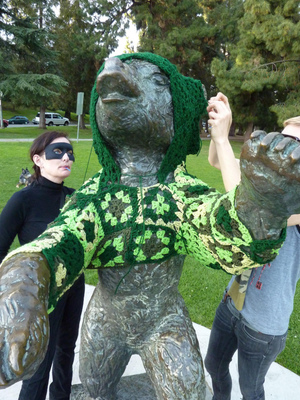When I was a kid I loved to collect beach glass, shells, pretty rocks, leaves, feathers, or whatever cool stuff I found. I would take them home and want to display them somewhere to admire and study them further. My mom was gracious enough to give me vases to hold the feathers, and let me keep my rock collection on top of our wooden fence (the brace that goes along the top) for years. Eventually I had quite the collection of feathers or rocks or whatever grouping I had come up with. It was not only educational, it was just fun and inspired a lot of creativity, either by arranging the items in new ways or imagining where they came from.
I think most kids really like to do this kind of treasure hunting, and in fact I don’t think it goes away as grown-ups; we just find reasons to stop collecting. Some of them are legitimate, like the fact that it’s illegal to remove items from state parks and beaches, even teeny tiny shells. Some grown-ups I know also replace this urge of hunting for feathers by going to yard sales or reused building material stores like the ReStore (hey, I’m guilty as charged). BUT, for the places it IS legal, and for a free version of this activity, I would encourage people to not only continue collecting, but to also make a space in your home specifically dedicated to your recent finds. For one thing, it’s fun, but it is also a great way to learn more about your environment, even just your own backyard. You may notice new colors or shapes and be inspired to draw the feathers you find, or explore the geology of a strange rock.
Mary Mullikan at Tree Life Coaching has created a “Found” table, or officially known as a Home Science Station, for her child, but I think this is a great idea for people of all ages:

I made the very easy one-word banner from Handmade Home and within an hour had the whole bite-size Science Station assembled. A few garage sale items re-purposed (like the little wooden board which is actually an old game piece), some family heirloom pottery, a few sprigs of lavender from our driveway and some mint from our herb garden, some of the rocks Orlis has been bringing indoors, a handful of sand and a postcard procured from our recent trip to the coast, and a flower in a jelly jar, Orlis’ collection basket, and a beloved piece of feedsack fabric to provide a backdrop. All of it was in the house or just outside, and now it’s here, displayed, for further discovery.
Oh, I love this little table already, and I know, as time passes it will change and change a hundred times as the seasons do and so do our fascinations with the great big world. I know we’ll easily find many things to pile and gather in the shelf below, and I know the living things will die and be replaced with other tangible items of interest. For now, it’s simple and easy, this little science station — the perfect place for a toddler to bring in his outdoor treasures for more handling and organizing, and deeper relationship.
I am excited to see this idea get picked up by different people and in different ways, and to see how easy it can be. Whether you have some wall space, a shelf, or even a window sill, it can be very fun and insightful to create a “science station” of your own to inspire you.
Have a science/creativity station already set up in your home? Send me a picture of it, or tell me about it in the comments below.





